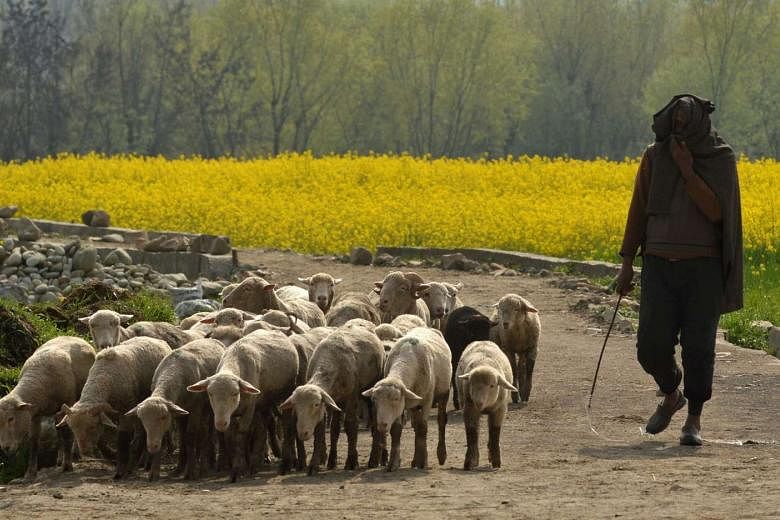NEW DELHI • The monsoon in India, which accounts for more than 80 per cent of annual rainfall, may be above average for the first time since 2013 after back-to-back shortfalls shrank agricultural production and caused an acute drinking water shortage.
Precipitation in the rainy season starting in June is seen at 106 per cent of a 50-year average of 89cm as the El Nino that often triggers dry weather in the region weakens, the India Meteorological Department said in a statement yesterday. The forecast has a margin of error of 5 per cent, it said.
Showers may be 105 per cent of the average, Skymet Weather Services, a private forecaster, said on Monday.
The prediction for stronger showers is seen as bolstering Prime Minister Narendra Modi's goal to double farmers' incomes in five years and stem the slide in his popularity ahead of key state elections next year.
The first consecutive rain shortfalls in almost three decades in 2014 and last year hurt rice, corn, sugarcane and oilseed crops, and threatened to fuel food costs in Asia's third- largest economy.
About half of India's 1.3 billion population is employed in agriculture, which accounts for almost 20 per cent of the nation's US$2 trillion (S$2.6 trillion) economy. Normal rainfall will boost farm output and improve demand for motorcycles, smartphones and tractors, giving a boost to the economy.
The monsoon affects both summer and winter sowing, and waters more than half of all farmland in India. Rainfall was 14 per cent below a 50-year average last year, following a 12 per cent shortfall in 2014, data from the India Meteorological Department shows.
The chances of a La Nina developing this year have increased to 50 per cent as the Pacific Ocean cools, according to Australia's government forecaster, which yesterday upgraded its outlook for the weather pattern to "watch".
Five of eight climate models surveyed suggest La Nina is likely by spring, with three neutral, the Bureau of Meteorology said on its website.
Australia's spring starts in September. A La Nina watch means there is about a 50 per cent chance of the pattern developing this year, about twice the normal likelihood, it said.
La Nina weather, which cools the equatorial Pacific Ocean, is sometimes thought of as the opposite of El Nino, which warms the waters. The two are extreme phases of a naturally occurring cycle, according to the National Oceanic and Atmospheric Administration.
Forecasters from Japan to the United States and Indonesia have predicted a La Nina could develop this year, potentially changing the weather globally.
BLOOMBERG

